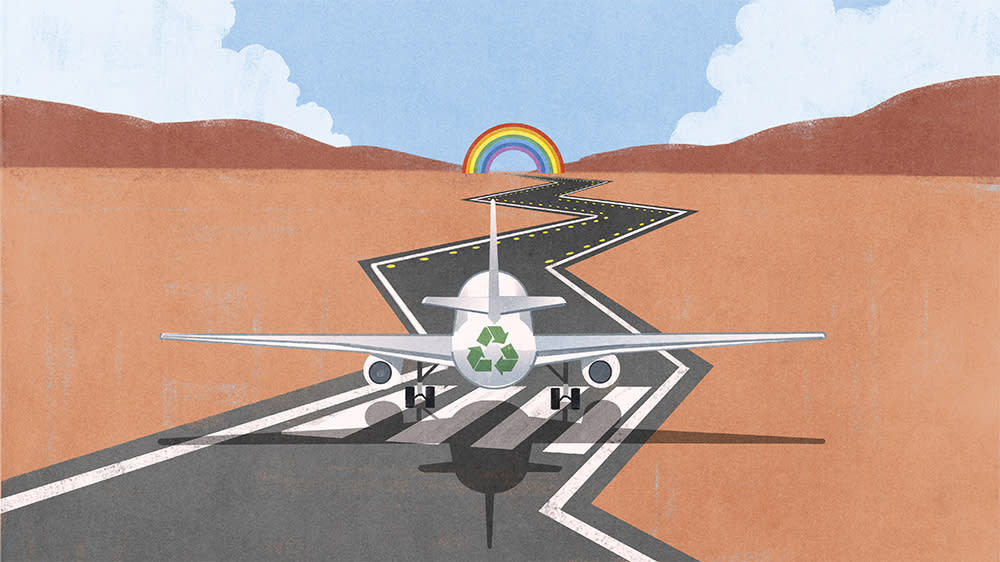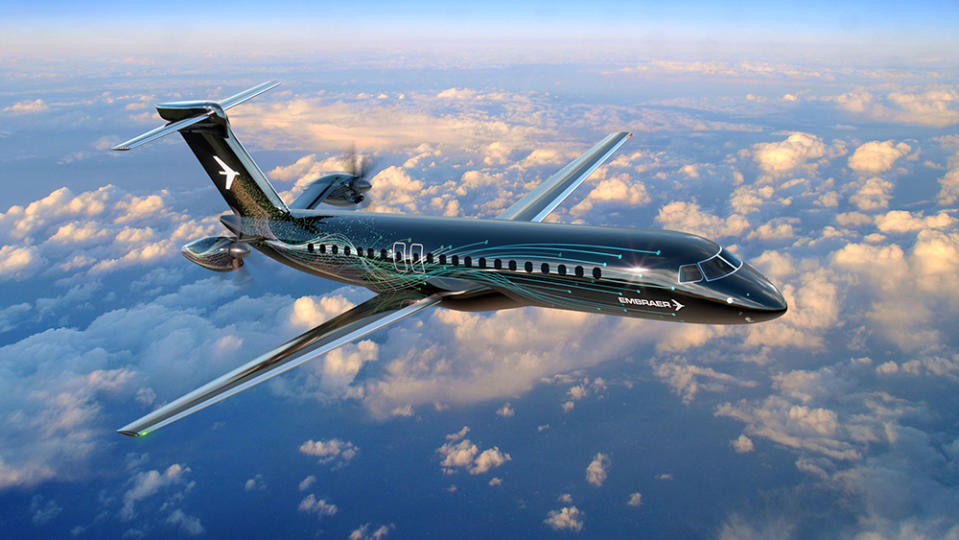True Sustainability for Private Jets Will Take Time. Here’s What Still Needs to Happen.

From biofuels to battery-powered aircraft, the aviation industry is searching for ways to shrink its carbon footprint. At the same time, opposition to private jets has reached a new level of visibility as environmental protesters lobby for stricter regulations and, in some cases, outright bans.
“We have a big target on our backs,” says Erik Lindbergh, chairman of the Lindbergh Foundation and grandson of Charles Lindbergh, the first aviator to fly nonstop across the Atlantic in 1927. “We need to get in front of the issue if we’re going to survive.”
More from Robb Report
Detractors note that private jets account for as much as 14 times more carbon emissions per passenger than a commercial airliner, but those numbers skew other data; with a reasonable number of travelers, a business jet’s emissions could be comparable to a single person driving a Ford F-150 pickup. Aircraft in general account for 2 percent of global emissions, while private aviation accounts for just 2 percent of that number.
Yet the negative perception has the industry frantically waving the sustainability flag. Last year, a coalition of business-aviation leaders made a commitment to reach net-zero carbon emissions by 2050. And, as part of an earlier 2009 agreement, private aviation kept its promise to improve fuel efficiency from 2010 to 2020 by two percent each year.
“And yet a lot more needs to be done, quicker than we think,” says Kennedy Ricci, founder of 4Air, which advises companies on ways to make their flight departments more sustainable. “We’re less than 5 percent of where we need to be by 2050.”
Ricci’s clients use verified carbon offsets—the sometimes controversial practice of mitigating environmental impact by investing in carbon-reduction programs elsewhere—and some have transitioned to sustainable aviation fuel (SAF), a biofuel that’s up to 80 percent cleaner than traditional jet aviation fuels. There are no hard-and-fast patterns to buy-in. Ricci says that many corporate flight departments, including Microsoft’s and American Express’s, align SAF purchasing to carbon-reduction goals while individual aircraft owners tend to set higher offset targets. “But we’ve also seen individuals willing to purchase higher percentages of SAF,” he says. “Geography can also be an influence, with some operators in Europe willing to start at higher commitment levels.”
London-headquartered jet-charter broker Victor stopped its carbon-offsetting program at the end of 2022 to focus on SAF, which is expected, over the next decades, to do the “heavy lifting when it comes to the industry’s carbon emissions,” says Toby Edwards, Victor co-CEO. Offsets, even when legit, can “still be perceived as a ‘stab in the dark’ and can detract from the more credible in-sector efforts we’re championing.”

For SAF to reach its full potential, refineries and airport distribution need to be expanded well beyond current infrastructure. Considering US business jets consumed about 12 percent of the 60 million gallons of blended SAF in 2022, “we punched above our weight,” says AvFuel’s Keith Sawyer. “And demand is growing.” But it’s just the start.
The US Department of Energy estimates that all forms of aviation will eventually need 35 billion gallons per year to meet the 2050 net-carbon-zero goals. Making SAF feasible could start via cash awards, with the Lindbergh Foundation supporting prizes for decarbonizing aviation. “It’s a complicated issue of enormous scale,” says Lindbergh. “But a $25 million incentive, and even smaller prizes, will prompt companies to solve friction points with workable results.”
The fast-emerging eVTOL sector, which analysts anticipate to be mainstream by 2035, could also aid efforts. Currently, 375 designs of these electric rotorcraft are under development. Eventually, a half- dozen companies are expected to emerge as industry leaders.
As for more conventional forms of aircraft, manufacturer Embraer has promised regional electric planes by the 2030s as part of its Energia program. “We’re testing an Ipanema electric demonstrator and soon plan hydrogen-fuel-cell tests on that platform,” says Alvadi Serpa Jr., director of product strategy for Embraer Executive Jets. Airbus also committed to a hydrogen-powered regional jet by 2035. Incremental aircraft design changes to enhance efficiency and modifications to air-traffic-control protocols are also seen as critical to decarbonization.
While everyone agrees the coming decades require revolutionary changes, nobody has a road map to get there—at least not yet. “There’s no magic-bullet solution,” said Jaiwon Shin, former NASA engineer and CEO of Advanced Air Mobility start-up Supernal. “But we need to be very serious, both in the air and on the ground, to make it happen.”
Best of Robb Report
Sign up for Robb Report's Newsletter. For the latest news, follow us on Facebook, Twitter, and Instagram.